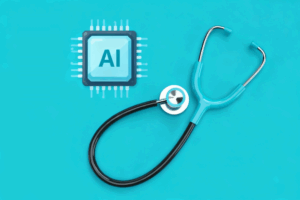Despite the high prevalence of iron deficiency and anemia in women in their reproductive years, they’re still widely under-diagnosed and under-treated. These disorders can lead to health problems, including poorer outcomes in pregnancy.
- Iron deficiency is a decrease in the body’s total iron content, indicating a deficient iron supply to tissues. It can be caused by loss of blood or poor absorption of iron.
- Severe iron deficiency may result in anemia, which occurs when the body does not have enough red blood cells to carry oxygen throughout the body.
It is especially important for women to recognize signs of iron deficiency and see a healthcare provider for assessment. Diagnosis involves routine blood tests, and treatment may include diet changes, oral iron supplements, or intravenous iron.
Iron deficiency and anemia in women: A silent threat
Iron deficiency and iron deficiency anemia are common health issues, particularly among women of reproductive age. According to the World Health Organization (WHO), in 2019, 29.9% of women of reproductive age (15-49 years) globally were estimated to have anemia. This translates to over half a billion women. A 2023 study published in Nature found that in low- and middle-income countries, the rate for anemia was 40-45% in reproductive-age women.
Despite their prevalence, these conditions often go undiagnosed and untreated, leading to a range of health problems.
The importance of iron
Iron is an essential mineral that plays a crucial role in many bodily functions, including oxygen transport, energy production, and cell growth. When iron levels are low, the body struggles to function optimally, leading to a variety of symptoms. In women, the presence of anemia is a risk factor for unfavorable outcomes in general as well as during the pregnancy and peripartum period (shortly before, during, and immediately after giving birth), including increased morbidity and mortality.
Women are affected more by iron deficiency than men for several reasons. Menstruation and childbirth cause the loss of red blood cells that carry iron. During pregnancy, women need more iron for gestational development. Other factors, such as a diet lacking iron-rich foods, and conditions like fibroids and chronic diseases can cause iron deficiency.
Symptoms of iron deficiency
Iron deficiency can sometimes be difficult to diagnose because symptoms may be subtle. They include:
- Fatigue
- Weakness
- Shortness of breath
- Pale skin
- Cold hands and feet
- Hair loss
- Brittle nails
- Headaches
- Difficulty concentrating
If you experience any of these symptoms, it’s important to consult with a healthcare provider for proper diagnosis and treatment.
![]()
Diagnosis and treatment for iron deficiency and anemia in women
Iron deficiency can occur without anemia and may precede anemia if untreated. Diagnosing iron deficiency or anemia involves collecting blood for specific tests.
Anemia is diagnosed by measuring hemoglobin. According to the WHO, anemia in nonpregnant women is defined by a hemoglobin level <12 gm/dL. Anemia in pregnant women is hemoglobin <11 gm/dL, in all three trimesters of gestation.
Diagnosing iron deficiency without anemia requires additional blood tests, usually ferritin and transferrin saturation (or TSAT). Ferritin is a protein in cells that holds iron, so measuring ferritin indicates the iron stores in the body. Ferritin levels less than 30 µg indicate iron deficiency in healthy people. For individuals with inflammatory conditions, iron deficiency occurs when serum ferritin levels are less than 100 µg. A TSAT test measures the amount of iron in your blood that’s bound to the protein transferrin. TSAT values indicate if iron is not available for the production of red blood cells. TSAT less than 20% should be investigated further for iron deficiency.
Treating iron deficiency
- Iron supplements: Oral iron supplements can help replenish iron stores in several months. Oral iron may cause gastrointestinal problems, which lead many people to stop treatment. Newer iron compounds are being developed with better absorption and fewer side effects.
- Dietary changes: Consuming iron-rich foods like meat, poultry, fish, beans, lentils, spinach, and fortified cereals can increase iron intake.
- Addressing underlying causes: Treating conditions like heavy menstrual bleeding or digestive disorders can help prevent recurrent iron deficiency.
- Intravenous iron: Infusing iron directly into the bloodstream can result in rapid replenishment of hemoglobin and low iron stores. It can even be used safely in pregnant women in the second and third trimester.
Preventing Iron Deficiency
To prevent iron deficiency, consider the following tips:
- Eat a balanced diet: Include iron-rich foods in your meals.
- Cook in cast-iron cookware: This can naturally add iron to your food.
- Consider iron supplements: If you’re at risk of iron deficiency, consult with your doctor about taking iron supplements.
- Manage menstrual bleeding: If you experience heavy menstrual bleeding, talk to your doctor about treatment options.
By understanding the causes, symptoms, and treatment of iron deficiency and anemia, women can take steps to maintain optimal health and well-being. For more information about the benefits of iron infusion to treat iron deficiency and anemia, see our Iron Deficiency webpage.
For an in-depth review of how iron is metabolized in the body and its importance to women’s health, check out this publication by Cappellini and colleagues. It includes details on intravenous iron as well as patient blood management that’s especially important for pregnant women


